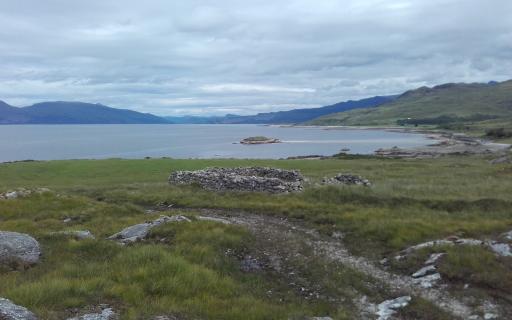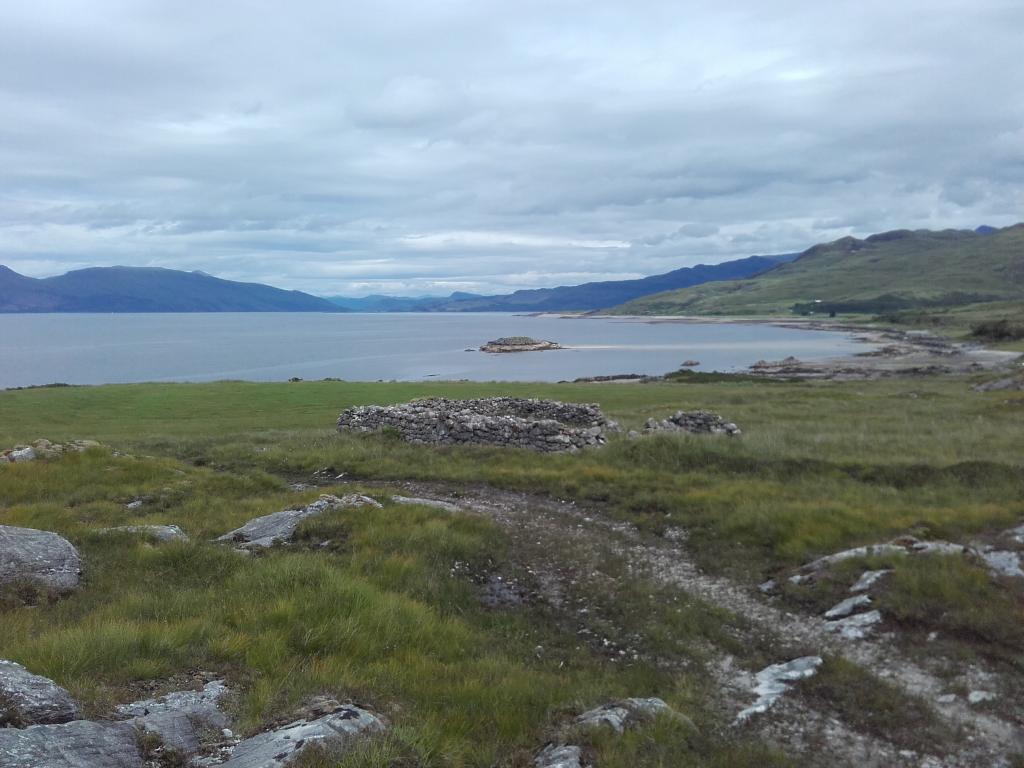The Knoydart Peninsula is one of the least accessible parts of the mainland Highlands, yet despite this it pulls people in from far and wide. Wild and unspoilt, this mountainous and beautiful finger of land lies between Loch Hourn to the north and Loch Nevis to the south. The main settlement of Inverie is home to over half the residents, some 120 people across the whole peninsula, and is also home to The Old Forge, famed as ‘Britain’s most remote pub’ and now community-owned too.
Inverie is accessible by ferry from Mallaig, but otherwise visitors who are not sailing to Knoydart, have to approach by foot. Of several challenging walking routes to choose from, the most popular with experienced hikers is via the bothy and rough camping area at Barrisdale Bay. Walking in to Inverie from this direction can be a strenuous two-day hike, though many choose to take longer, using the time to bag one or more of the peninsula’s three remote Munros, namely Ladhar Bheinn, Luinne Bheinn and Meall Buidhe.
This is wild, working, welcoming Knoydart
Exploring the hills and glens of Knoydart is not an undertaking to take lightly, but it is one of the most rewarding on the Scottish mainland. On the network of old hill paths climbing over the high passes, the stone steps echo of times long past when many more people lived in Knoydart and would walk from home to home. The overgrown ruins of the old townships still provide evidence of this living landscape long-lost.
Today, Knoydart is very much a working land, the peninsula comprising several Highland estates, the largest managed by the community-owned Knoydart Foundation. The small harbour of Inverie is the main gathering point for locals and visitors too. Walking, cycling and sailing are all popular activities. With its spectacular scenery and welcoming community, Knoydart attracts artists, writers and nature lovers. The peninsula also has a rich history that harks back to earlier days when sea travel connected coastal communities across the west Highlands and Islands, and vessels of all sizes from early currachs to Viking longships plied these waters.


